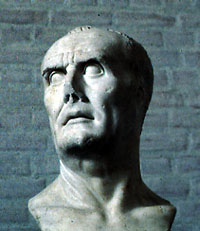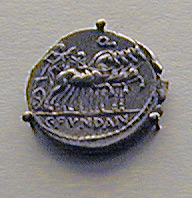 |
| Gaius Marius (?), Munich Glyptoteck |
 |
| Gaius Marius (?), Munich Glyptoteck |
Attempts at Land Reform: In 133 BCE, Tiberius Sempronius Gracchus was elected tribune and pushed through an agrarian bill that proposed breaking up some large landholdings of the nobles and redistributing the land to the poorer classes; he also undermined the Senate's role in finances by attempting to allocate funds for this purpose. When he unconstitutionally sought re-election as tribune, he was murdered by a mob led by a prominent senator. In 123 and again in 122 BCE, his younger brother Gaius was elected tribune and promoted more radical economic reforms. He also transferred control of the lawcourts from the Senate to the equestrians. When Gaius was not re-elected in 121, riots erupted in Rome. The Senate declared an emergency, passing the first recorded senatus consultum ultimum, and Gaius and many of his followers were killed in the subsequent violence. Although Cornelia, the mother of Tiberius and Gaius, was the daughter of Scipio Africanus, and their father was a senator, the brothers were plebeians and therefore eligible for the office of tribune; they both chose to support popular rather than senatorial causes.
Army Influences Politics: Gaius Marius, of the equestrian class, rose to prominence because of his military leadership; he was elected consul in 107 BCE in the midst of a difficult war with Numidia, and thereafter conducted several successful military campaigns. Marius consolidated many reforms in the army that opened it to the poorest citizens as a career. He celebrated a triumph in 104 BCE and then unconstitutionally held the consulship for 5 consecutive years from 104-100 BCE. When in office, he worked closely with tribunes who promoted popular causes and used intimidation to pass legislation. After 100, his influence declined as that of Sulla rose; with the help of a popular leader named Cinna, he seized power and the consulship in 86 BCE, initiated a bloodbath to wipe out his enemies, but died soon afterwards.
 |
| coin showing Marius in a triumphal chariot, c 100 BCE |
Barbara F. McManus
Close this window when finished.